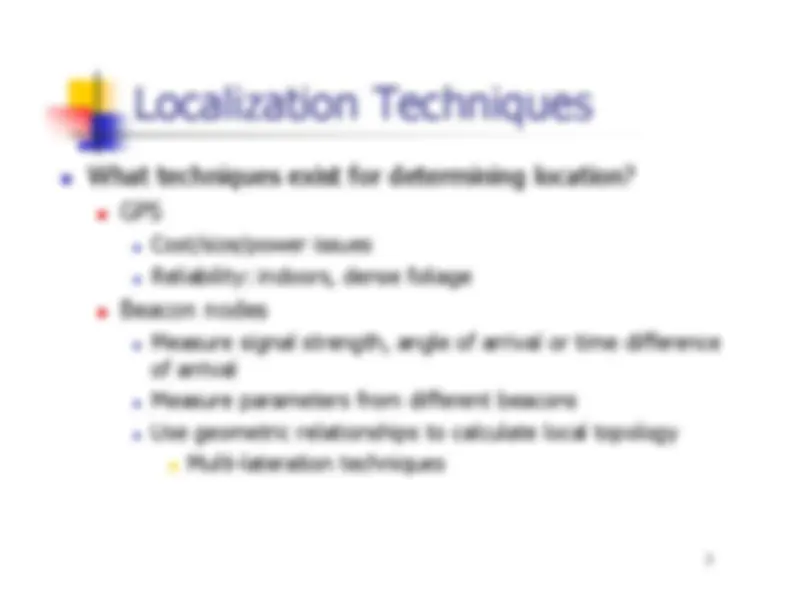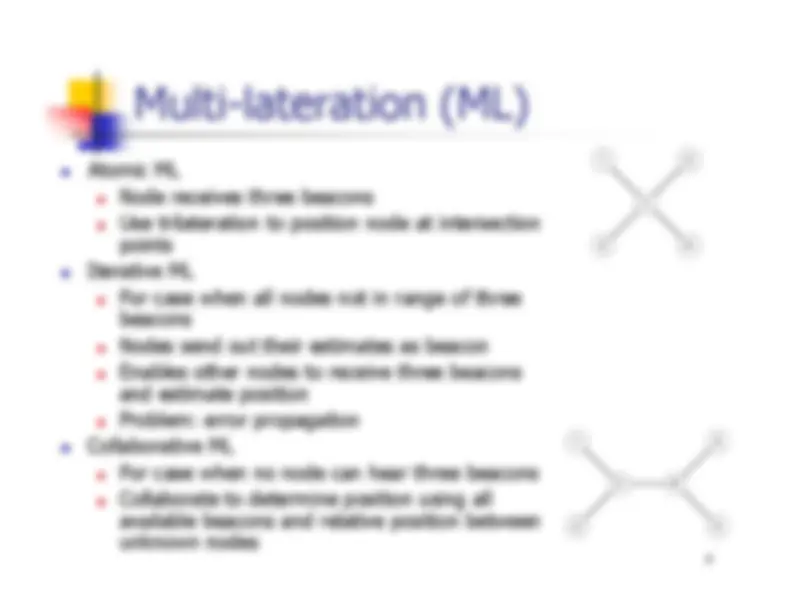






Study with the several resources on Docsity

Earn points by helping other students or get them with a premium plan


Prepare for your exams
Study with the several resources on Docsity

Earn points to download
Earn points by helping other students or get them with a premium plan
Community
Ask the community for help and clear up your study doubts
Discover the best universities in your country according to Docsity users
Free resources
Download our free guides on studying techniques, anxiety management strategies, and thesis advice from Docsity tutors
Localization, Localization Techniques, Multi Lateration, ML, Pair Wise Distance, Reference Point, Centroid Scheme, Atomic, Iterative, Collaborative, Beacon Nodes, GPS, Received Signal Strength Indicator, RSSI, Time of Arrival, ToA, Time Difference of Arrival, TDoA, Angle of Arrival, AoA
Typology: Slides
1 / 8

This page cannot be seen from the preview
Don't miss anything!





Reading: • “Wireless Sensor Networks,” in
N. Bulusu, J. Heidemann and D. Estrin, "GPS-less Low CostOutdoor Localization for Very Small Devices,” IEEE WirelessCommunications, Vol 7. No.5, pp. 27-34, Oct 2000.
Sensors often must know their location – why? Goals for localization algorithm RF-based: reduces added hardware costs Receiver-based: scales better Ad hoc: no existing infrastructure needed Responsive: localize quickly Low energy Adaptive fidelity: better localization with more referencepoints
Atomic ML Node receives three beacons Use trilateration to position node at intersectionpoints Iterative ML For case when all nodes not in range of threebeacons Nodes send out their estimates as beacon Enables other nodes to receive three beaconsand estimate position Problem: error propagation Collaborative ML For case when no node can hear three beacons Collaborate to determine position using allavailable beacons and relative position betweenunknown nodes
Use connectivity information Create graph using connectivity information between allpairs of nodes Assign locations to nodes to satisfy all constraints Relative positioning Can determine absolute positioning if three nodes in thenetwork know their position
Reference Point Centroid Scheme Sensors listen for beacons Compute location as centroid of locations of referencebeacons Does not require RSSI, ToA, etc. Can have large errors Trade-off in resolution/error of location estimate withnumber of beacon nodes Error increases indoors as propagation not uniform Can improve system if know location of all beaconnodes Use position of beacons hear and not heard